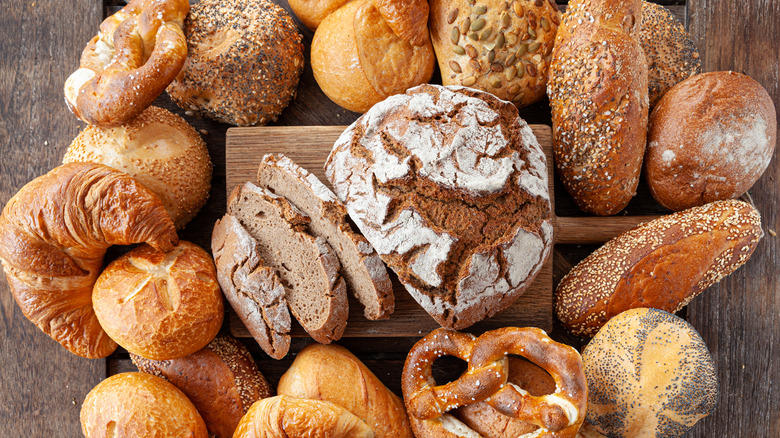Don't Panic If Your Baked Goods Have Mysterious Blue Streaks
Baking comes with many pitfalls and opportunities to mess-up your end results. As Baking Kneads notes, if you've ever found you've mixed in too much flour, over-stirred your batter, or your favorite cake recipe came out of the oven both resembling and tasting like a brick, you've run into some of these baking obstacles. But, if you are a baker, you know there is a lot happening when you mix ingredients together and pop them into the oven.
Whether you are making your favorite homemade cookies or brown butter banana bread recipe, when the timer goes off, you have a completely different food that has been baked to perfection. As Sciencing.com explains, when you bake a cake, there are a series of chemical reactions that occur, transforming cake batter into a delicious, sweet bread. This chain of reactions contributes to the structure of your baked good's appearance, its overall texture (be it hard and crunchy or fluffy and moist), how golden brown your recipes turn, and the caramelization of your ingredients.
But if you ever find mysterious blue streaks running through you baked goods, don't panic; There's a logical reason this is happening.
Check the box of your baking soda
According to Smitten Kitchen, it's not worth stressing if you find your muffins or cupcakes with streaks of blue or green. The cooking site notes that more often than not, this happens because of your baking powder. Baking powder is a leavener, but the site says you may be more likely to see this phenomenon occur when you are using a baking powder with aluminum. You are simply witnessing how it reacts with acidic ingredients like lemon or blueberries. It doesn't change the edibility of the food. Of course, if blue and green aren't your colors, Smitten Kitchen suggests trying an "aluminum-free brand, such as Rumford (the brand also makes Clabber Girl baking powder, which, oddly, does contain aluminum) or Bob's Red Mill."
Cooking Light explains baking powder requires a liquid and heat in order for a mixture to release gas. This is exactly what has occurred when you see those blue streaks. But if you find your cookies and scones have a bit of a metallic taste, Cooking Light shares this is because of your baking soda. To escape those undesirable flavors, the experts suggest making your own.
Per Smitten Kitchen, you can be done altogether with that metallic taste by mixing "one part baking soda to one part cornstarch and two parts cream of tartar."

